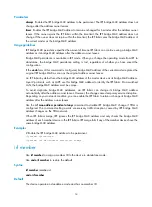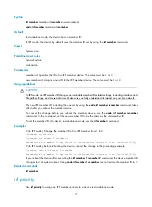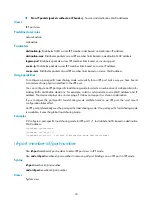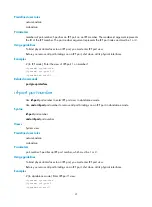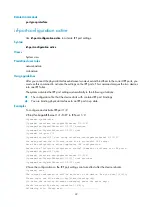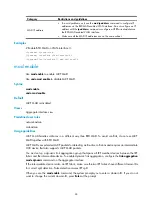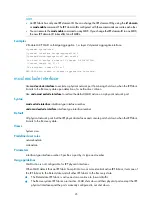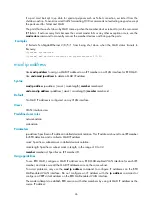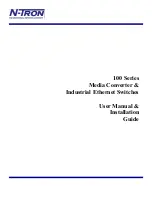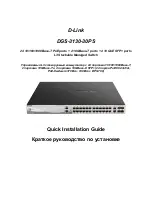
11
The feature does not take effect on a merge that occurs when both of the following conditions exist:
•
You bind a physical interface to an IRF port.
•
The interface has been connected to the peer IRF physical interface before the binding operation.
Examples
# Enable IRF auto-merge.
<Sysname> system-view
[Sysname] irf auto-merge enable
irf domain
Use
irf domain
to assign a domain ID to an IRF fabric.
Use
undo irf domain
to restore the default IRF domain setting.
Syntax
irf domain
domain-id
undo irf
domain
Default
The IRF domain ID is 0.
Views
System view
Predefined user roles
network-admin
mdc-admin
Parameters
domain-id
: Specifies a domain ID for the IRF fabric. The value range is 0 to 4294967295.
Usage guidelines
This command is available in IRF mode. When you change the operating mode from IRF to standalone,
the IRF domain setting is lost, regardless of whether you have saved the configuration.
One IRF fabric forms one IRF domain. IRF uses IRF domain IDs to uniquely identify IRF fabrics and prevent
IRF fabrics from interfering with one another.
If you use one IRF fabric as the intermediate device for LACP MAD for another IRF fabric, assign the two
IRF fabrics different domain IDs for correct split detection. False detection causes IRF split.
An IRF fabric has only one IRF domain ID. You can change the IRF domain ID by using the
irf domain
or
mad enable
command. The IRF domain IDs configured with these commands overwrite each other. In an
MDC environment, the
irf domain
command is available only on the default MDC, but the
mad enable
command is available on all MDCs. If you change the IRF domain ID in one MDC, the IRF domain IDs
in all other MDCs change automatically.
Examples
# Set the IRF domain ID to 30.
<Sysname> system-view
[Sysname] irf domain 30


















